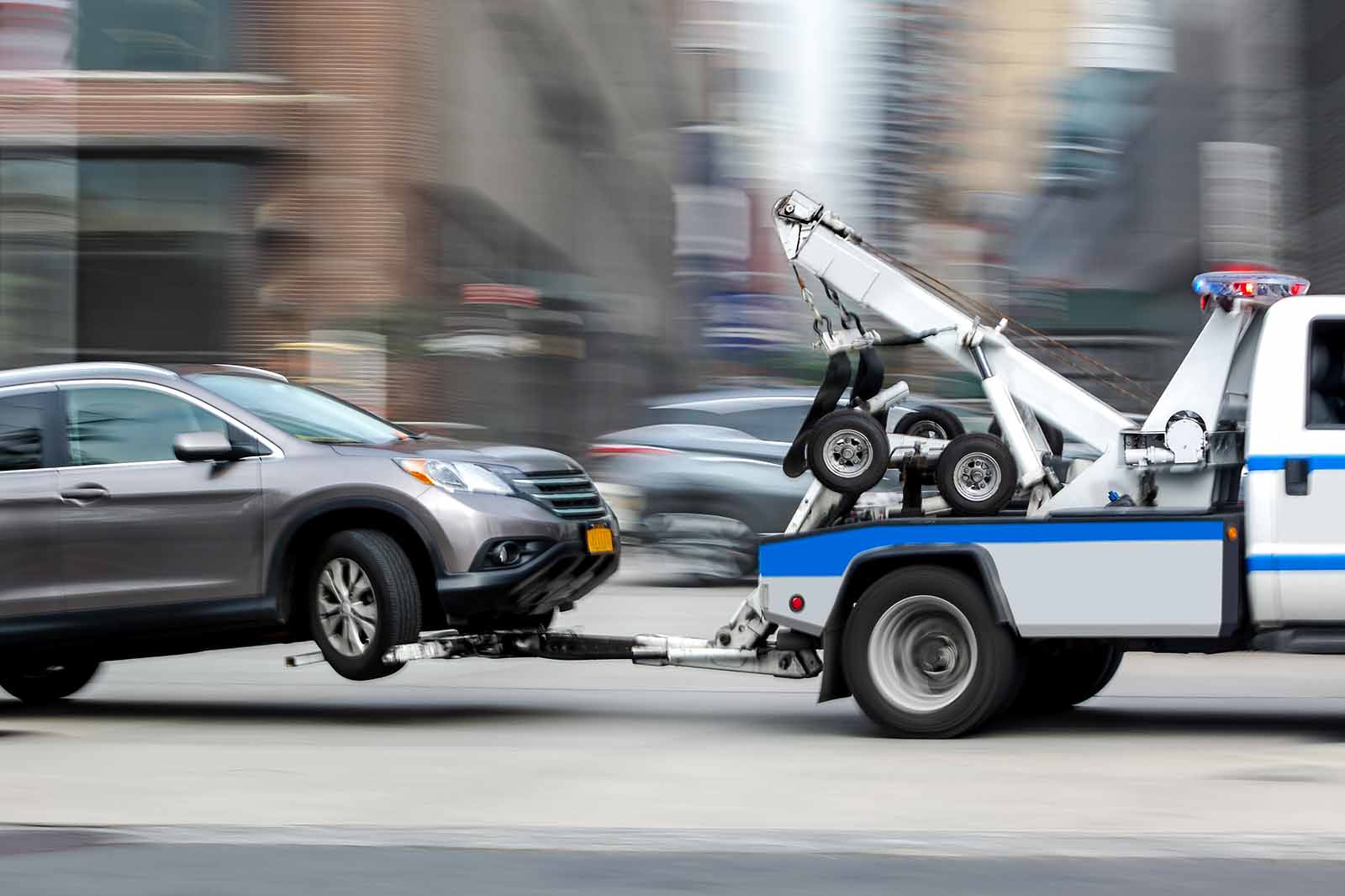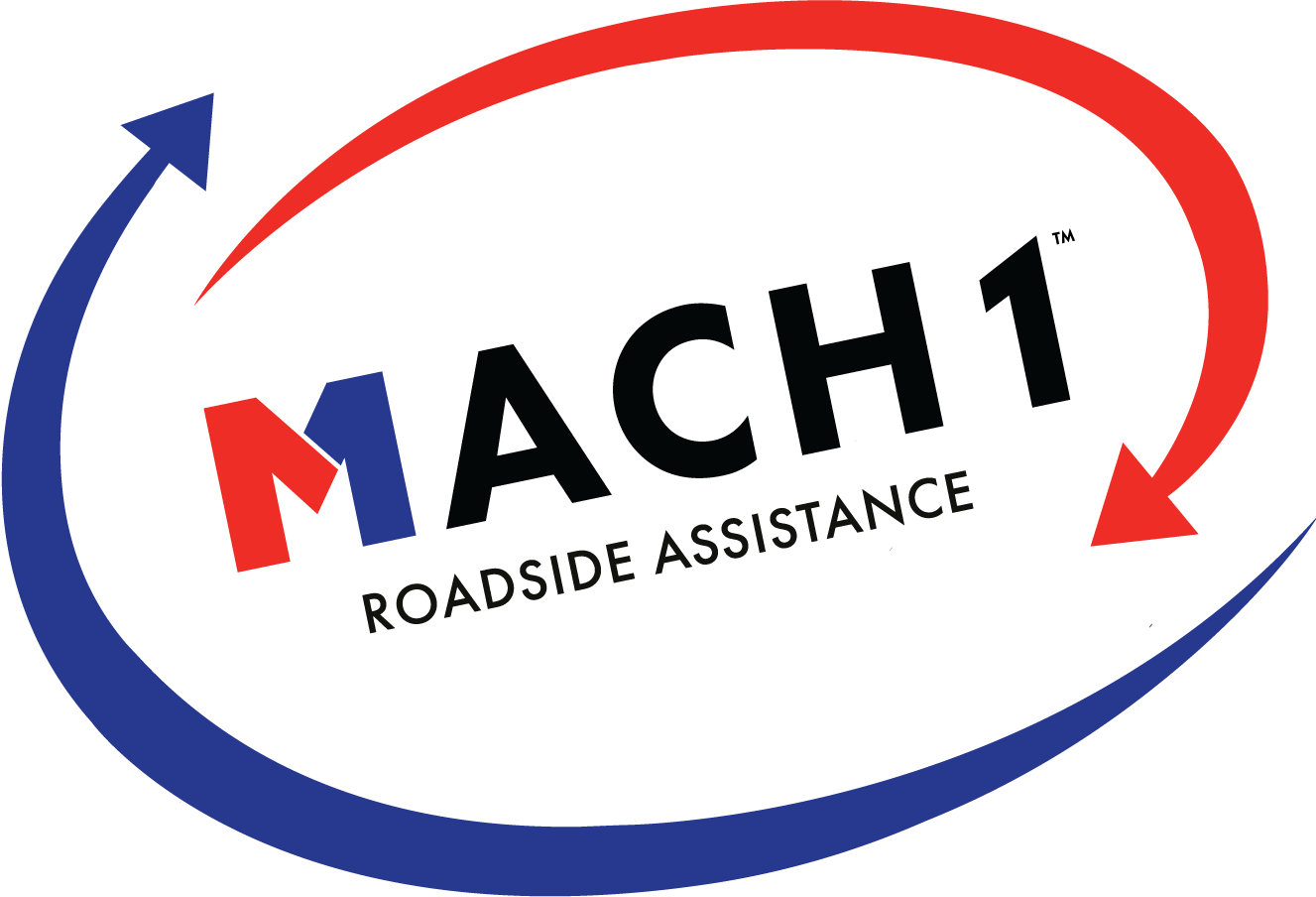
25 Sep How does a tow truck work?
Tow trucks are exciting vehicles. From afar, it appears that the driver makes a few connections and the tow truck is ready for action. But of course, there’s more going on than meets the eye. Tow trucks are complex. They do have to have the strength to tow an entire vehicle, after all.
Tow trucks work by fitting brackets in between the wheels of a car and securing the car safely to the truck with pins. It is a simple concept, but the material and strength of the tow truck parts are extremely powerful and reliable tools.
If you’re interested in precisely a tow truck works, this article is for you. More information on how a tow truck works, along with a few other answers to questions you might have about tow trucks, is coming right up. Just keep reading.
5 Basic Principles for How A Tow Truck Works
Connecting to the Bracket System
Today’s most modern tow trucks use a bracket system for easy towing. On the back of a tow truck is a large steel frame that is used to support the car that the truck is towing. This method is seen as the safest way because it requires little manual work from the driver while also only touching the wheels of the car being towed.
Bracket system tow trucks can be used for both the front and rear wheels of a car. This method of towing is seen as the quickest and most efficient, and the owner of the car being towed can be sure that their car will not be damaged with the use of hooks or chains.
Secure the Vehicle
With a bracket system, the wheels of the car are fitted between the steel beams and then secured in place with solid steel pins. How this works is with the use of machinery that lowers and raises the steel beams, altogether known as the yolk.
The car is positioned in place for the yolk to be lowered. The car is maneuvered into the yolk evenly, and then pins are put through the wheels to keep the car in place.
As we said before, this is the safest way to tow a car, as it ensures that any other parts of the car are not damaged in the towing process. Once the car is secured to the yolk with the steel pins, it is ready to be towed.
Efficiency and Quickness
Working with efficiency and quickness is imperative to keeping tow truck drivers safe. In the tow truck driver’s case, the only manual labor required is the act of fitting the pins properly through the yolk and the wheels. Other than that, all of the lowering and lifting of the yolk is taken care of mechanically.
This also proves safer for the tow truck driver. At the same time, an experienced tow truck driver can cover this whole process in under a minute. With other methods of towing, finding the right spot to manually connect chains or hooks to the bottom of the car can be a grueling process.
Chain and Hook Towing
Of course, not all tow trucks use a bracket system, and what type of tow truck is used depends on the owner of the tow truck company. Bracket system tow trucks that use a yolk and pins for towing are simply the most modern types of tow trucks. Other tow trucks are still used today and work just as well.
A tow truck that uses a hook and chain works similarly to that of a bracket system tow truck. However, rather than a mechanical steel fixture lifting the car, the truck uses a strong hook that attaches to the underside of the car. It also might require a few extra chains to secure connection to the tow truck. This is an effective method, but as we said before, some people do not like the idea of their car being towed by the parts underneath it.
Flatbed Towing
Another type of tow truck is a flatbed truck. Again, its primary function is the same as any other tow truck; it just works a different way. A flatbed tow truck uses a mechanical system to angle its bed like a ramp, and the car needing a tow is then maneuvered onto the bed.
The car’s wheels are fastened with chains running through them that attach to the flatbed. Then, the flatbed is mechanically lower back down to a flat state, and the car is ready to be towed.
The plus side to flatbed tow trucks is that they might be able to tow more than just a car. They can tow construction machines, motorcycles, and many other vehicles. However, they may not be a tower’s first pick because of the added labor required.
How Heavy Is A Tow Truck?
The weight of a tow truck depends upon type of tow truck and what vehicles it is made to tow. Some trucks are better suited for towing everyday cars like sedans and SUVs, while others might be made to tow large pieces of machinery or buses.
There are three main classifications of tow trucks, and the main characteristic that decides what division a tow truck falls into is its weight.
- Light-duty tow trucks weigh between 8,600 lbs. And 10,000 lbs. These trucks can haul most types of cars with no problem and might be the most common type of tow truck you would see on the road on any given day.
- Medium-duty tow trucks weigh between 10,001 lbs. And 26,000 lbs. Also pretty standard, these tow trucks can tow regular cars as well as larger cars or trucks. On occasion, they can tow smaller pieces of machinery.
- Heavy-duty tow trucks consist of any tow truck that weighs over 26,000 lbs. These trucks do have the ability to tow cars, but they are often used for large vehicles, as mentioned above, like construction machinery, buses, and any other large-scale vehicle.
Source: TOW TRUCKS
How Long Does It Take to Hook Up A Tow Truck?
The length of time it takes to hook up a tow truck is also contingent upon the type of tow truck, similar to the weight of a tow truck. Another factor in how long it takes to hook up a tow truck is how much manpower is involved vs. how much the truck does on its own.
A tow truck driver that knows what he or she is doing and can correctly line up the yolk with the car can get the job done in well under a minute. This is the reason bracket system trucks are so standard. They are a safe and comfortable bet for both parties involved.
Hook and chain tow trucks will probably take a little more time to hook up to the vehicle they are towing. There is more manual labor involved. The tow truck driver cannot just place the hook on a random part of the car being towed.
He or she must find a spot underneath the car that will be able to support the weight of the vehicle as the tow truck pulls it. Finding the proper place to hook up the vehicle and then further securing the vehicle with other chains can be a five-minute process.
Flatbed towing, while an effective method, likely takes the most extended amount of time to hook up to a vehicle. However, its use of mechanics to raise and lower its bed requires almost as little manual labor as the bracket system.
What takes the most time is the slow angling of the bed to make sure the vehicle being towed can be safely maneuvered onto the truck. After that, the tow truck driver must fasten the car to the bed with chains or straps through each wheel of the vehicle.
Different tow trucks require different amounts of time to properly hook up to the vehicle the truck driver is towing, but at the end of the day, it is going to fall on you – or your employer’s – opinion of what truck is best to use. Some people agree with the prevalent dependency of bracket system tow trucks, while others prefer hook and chain or flatbed methods.
Do I Have to Go with A Tow Truck?
Many people might find themselves in a situation where a tow truck might be needed, whether it involves a vehicle accident, running out of gas on the highway, a break down, or any other malfunction. If that is ever your situation you can get tow truck service through Mach 1 roadside assistance. It is imperative to understand that just because your car or other vehicle seems to be working correctly after an incident does not mean it is okay to drive.
Think about it. Even cars severely damaged in a car wreck might still have the ability to run and, theoretically, drive, but that does not mean a totaled car is safe to operate.
If you are not very knowledgeable in the field of the functionality of a vehicle and you find yourself in a position where something unusual is going on with your vehicle, it might not be safe to operate, and a tow truck could be your best bet. Wether it’s a mechanical problem or change a flat tire, you can check out the cost for a tow truck and decide which service is most convenient to you.
Contacting a towing company can be a hassle, with fees, finding the right company, and wait time. However, dealing with all that is much safer than risking both the life of your vehicle and your own life by ignoring a possible problem.
What Are the Requirements To Be A Tow Truck Driver?
The primary requirements to be a tow truck driver are relatively simple, like any other typical job. First off, you must be at least 18 years or older to operate a tow truck. In the event of hiring an employee, a towing company might want initial evidence of physical capability.
It is nothing too serious, but as a tow truck driver, you will have to do light lifting quite often, as well as be able to work in different conditions, whether that be a hot summer’s day or a freezing, rainy night. Additionally, you will probably have to pass a drug test.
Other parts of the physical assessment will check your hearing and sight to ensure that you will be able to safely and properly operate a tow truck. There is no specific tow truck license you must have before becoming a tow truck driver, but you are required to have a regular driver’s license.
Again, as with any other company, you will have to go through a background check, which will also look at your driving record. Towing companies do not want to hire a reckless driver. If you meet these simple criteria, your path to becoming a tow truck driver has begun.
What Is the Difference Between A Tow Truck and A Wrecker?
What most people may not know is that a wrecker is technically a type of tow truck. It is used for, as you may have guessed, wrecks, but it can also to regular tows.
Trucks that are towed with two wheels off the ground and two on the truck are considered wreckers. Bracket systems and hook and chain trucks are both wreckers.
The main specification is that wreckers are better suited for towing vehicles that need to be more carefully transported due to damage or lack of a place to correctly tow the vehicle with a different type of tow truck.
Final Thoughts
How tow trucks work can be broken down into the five basic principals, we discussed above, although most tow trucks rely on a bracket system to get the job done.
